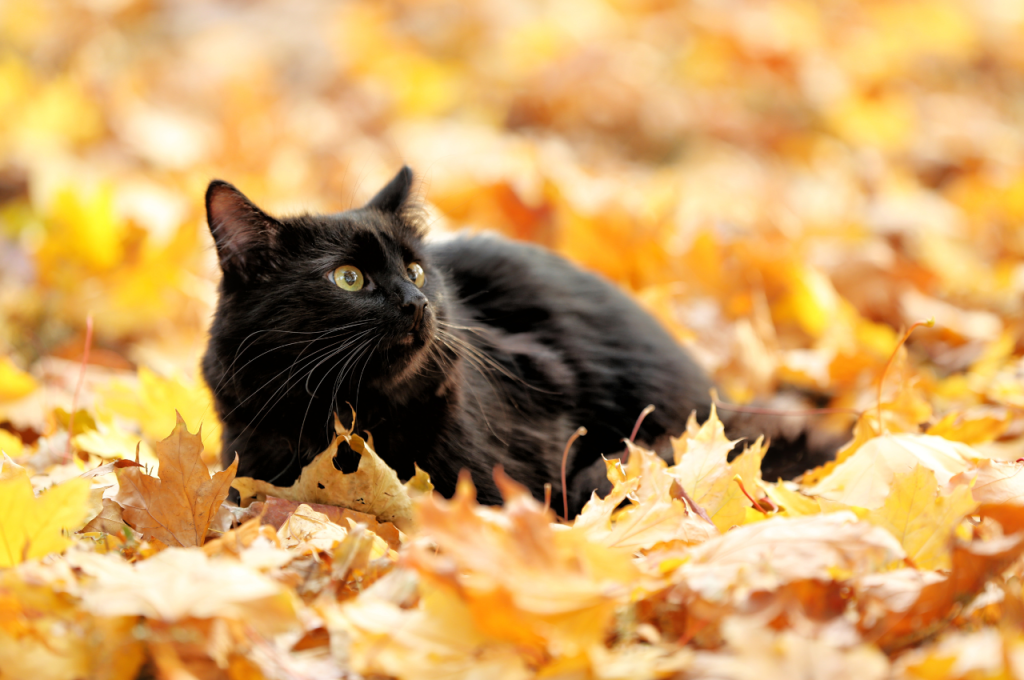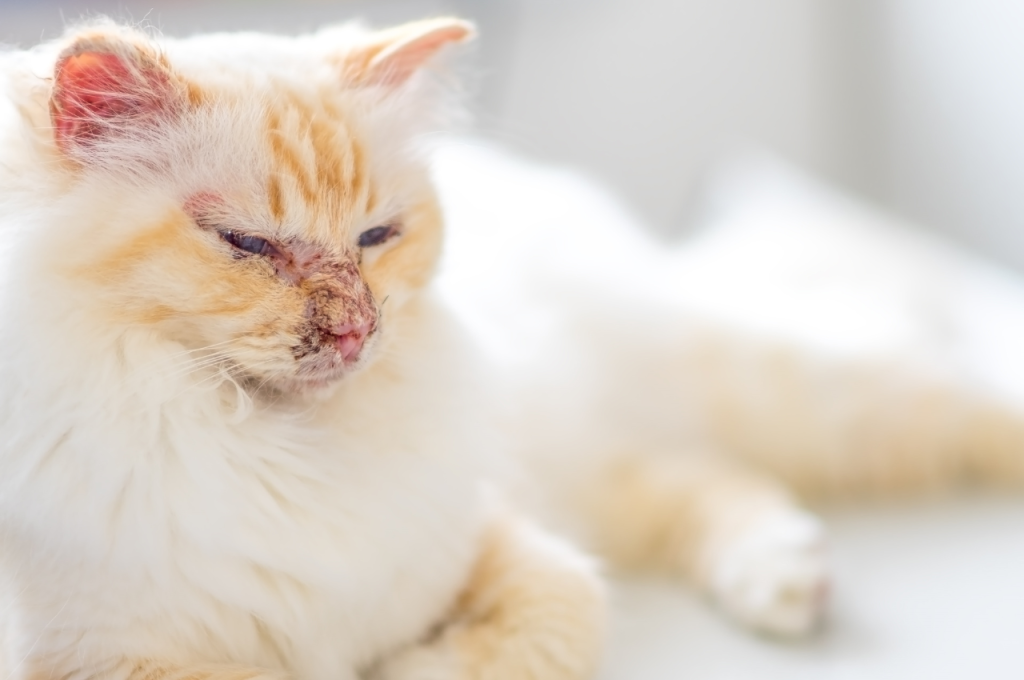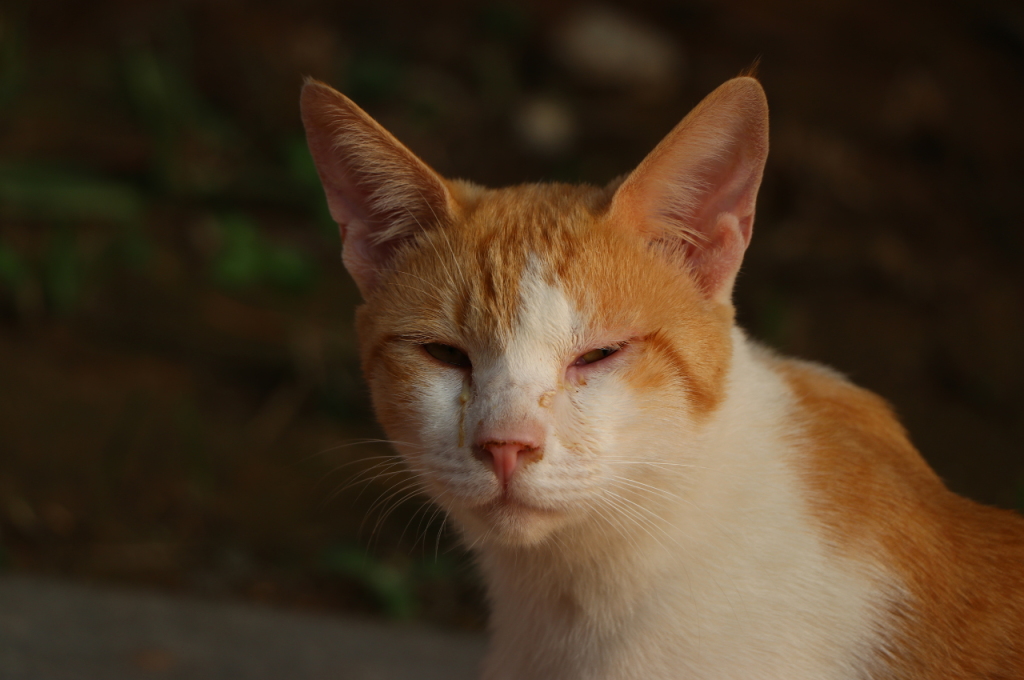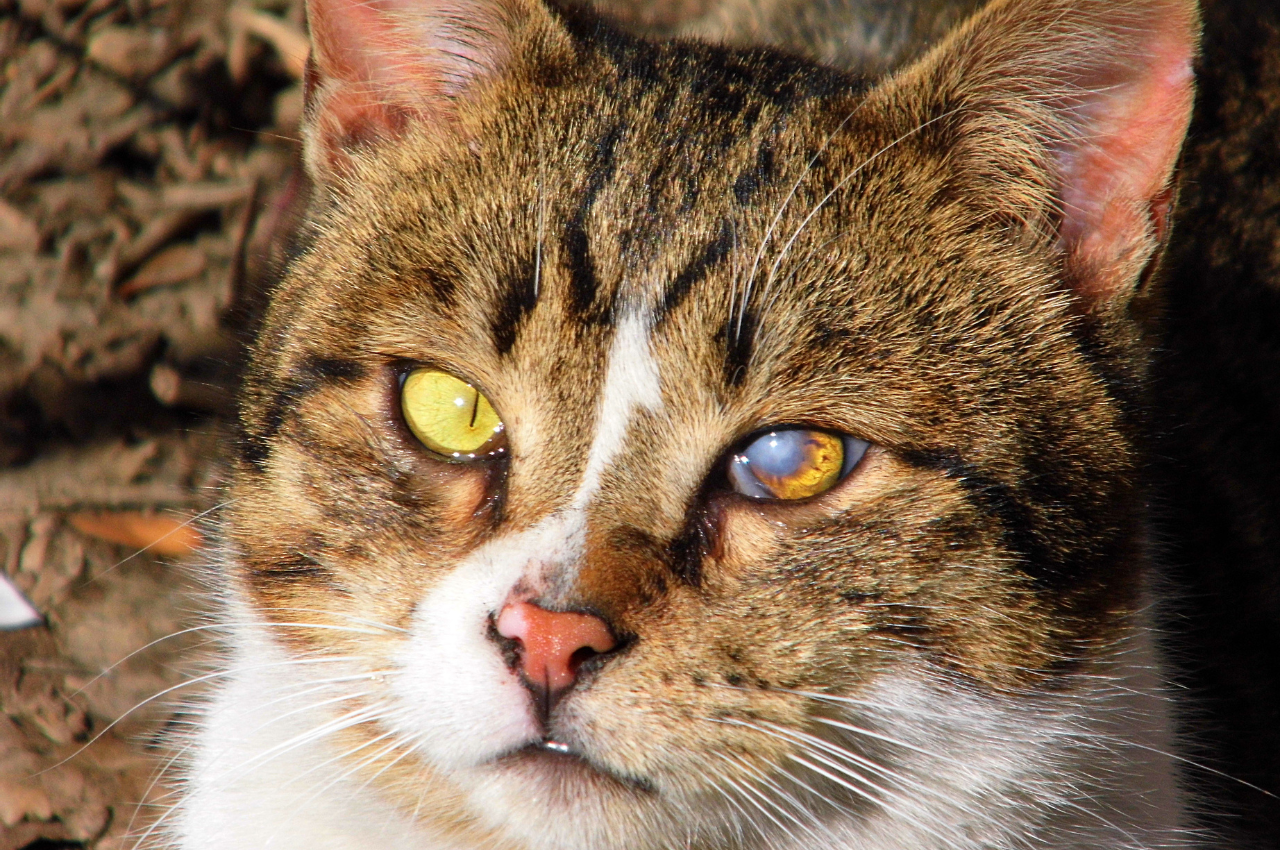The most common cause of death in cats is kidney disease. This condition affects many felines.
Kidney disease can progress slowly, leading to various health complications and ultimately resulting in death. Identifying the signs early and seeking proper veterinary care can help manage the disease and improve the cat’s quality of life. Understanding the risk factors and taking preventive measures can also play a crucial role in reducing the incidence of kidney disease in cats. By staying informed and attentive to their health, cat owners can help their feline companions live longer and healthier lives.
Introduction To Feline Mortality
Feline mortality is a natural part of a cat’s life cycle, but it can be a challenging topic for cat owners to address. Understanding the factors that contribute to a cat’s lifespan, such as genetics, diet, and overall health, can help pet owners provide the best care for their feline companions. While some cats live into their late teens or even twenties, others may face health complications or accidents that shorten their lives. Recognizing the signs of aging or illness early can allow for timely medical interventions, potentially prolonging a cat’s life and ensuring a better quality of life during their final years. Knowing what to expect helps owners cope with the emotional aspects of feline mortality.

Common Misconceptions About Cat Deaths
One common misconception about cat deaths is that they are solely due to old age. However, there are various factors that contribute to feline mortality, including diseases, accidents, and environmental hazards.
Importance Of Understanding Feline Health
Understanding feline health is crucial for cat owners as it can help in the early detection of potential health issues. Regular vet check-ups and a healthy diet can significantly improve a cat’s lifespan and quality of life.
Leading Causes Of Death In Domestic Cats
The most common cause of death in domestic cats is related to trauma, such as being hit by a car or falling from a height. Other leading causes include kidney disease, cancer, and infectious diseases. Regular veterinary check-ups and keeping cats indoors can help prevent these tragedies.
Age-related Trends In Cat Mortality
Cats, like humans, experience age-related health issues that can contribute to their mortality. As cats age, they become more susceptible to certain conditions and diseases. The most common age-related causes of death in domestic cats include:
- Chronic kidney disease: This progressive condition affects a significant number of aging cats. It occurs when the kidneys are no longer able to function properly, leading to a buildup of toxins in the body.
- Heart disease: Cats, especially older ones, may develop various heart conditions such as hypertrophic cardiomyopathy (HCM) or congestive heart failure (CHF). These conditions can significantly impact their overall health and longevity.
- Cancer: Just like humans, cats can develop cancer as they age. Common types of cancer in cats include lymphoma, mammary tumors, and oral squamous cell carcinoma. Early detection and treatment are crucial for improving outcomes.
- Hypertension: High blood pressure is a common health issue in older cats. It can lead to damage to vital organs, including the kidneys, eyes, and heart.
Comparing Indoor And Outdoor Risks
The environment in which a cat lives can greatly influence its risk of mortality. Here’s a comparison of the risks associated with indoor and outdoor living for cats:
Indoor Cats:
- Reduced exposure to infectious diseases such as feline leukemia virus (FeLV) and feline immunodeficiency virus (FIV).
- Lower risk of trauma from accidents, such as being hit by a vehicle or attacked by other animals.
- Decreased chances of encountering environmental hazards, such as toxic plants or chemicals.
Outdoor Cats:
- Increased risk of infectious diseases due to exposure to other cats, wildlife, and parasites.
- Higher likelihood of trauma from accidents, including injuries sustained during fights with other animals.
- Greater chance of encountering toxic substances, such as antifreeze or pesticides. It’s important to note that providing an enriching indoor environment with plenty of mental and physical stimulation can help mitigate some of the risks associated with indoor living.
In conclusion, understanding the leading causes of death in domestic cats can help pet owners take proactive steps to ensure their feline companions live long and healthy lives. Regular veterinary check-ups, a balanced diet, and a safe living environment are crucial in promoting feline well-being and longevity.
Kidney Disease: A Silent Killer
Kidney disease is a common and often undiagnosed health issue that affects cats. Chronic kidney disease, in particular, is often referred to as a “silent killer” due to its subtle progression and lack of obvious symptoms until the disease has already advanced. Understanding the prevalence of chronic kidney disease in cats, as well as the importance of early detection and management, is crucial for cat owners in order to ensure the well-being of their feline companions.
Chronic Kidney Disease Prevalence
Chronic kidney disease is one of the leading causes of death in cats, particularly in older felines. Studies have shown that approximately 30-40% of cats over the age of 10 may be affected by some degree of kidney disease. This prevalence underscores the significance of proactive measures to monitor and address kidney health in aging cats.
Early Detection And Management
Early detection of chronic kidney disease can significantly impact the prognosis and quality of life for cats. Regular veterinary check-ups and blood and urine tests can aid in the early identification of kidney disease. Once diagnosed, implementing a specialized diet, hydration, and, if necessary, medication can help manage the progression of the disease and alleviate associated symptoms, ultimately extending the lifespan of affected cats.
Cancer In Cats: Types And Treatment
Cancer is the most common cause of death in cats, with lymphoma, skin tumors, and mammary gland tumors being the prevalent types. Treatment options include surgery, chemotherapy, and radiation therapy, with early detection being crucial for a positive outcome. Regular veterinary check-ups are essential in identifying and addressing any potential issues early on.
When it comes to feline health, cancer remains a concerning issue. The most frequent cancers in felines include lymphoma, mast cell tumors, and squamous cell carcinoma. These conditions can affect various parts of the body, from the skin to the internal organs. Advancements in veterinary oncology have led to improved treatment options for cats diagnosed with cancer.
Most Frequent Cancers In Felines
In cats, the most frequent cancers include:
- Lymphoma
- Mast cell tumors
- And squamous cell carcinoma
Advancements in veterinary oncology have improved the treatment options for feline cancer. Veterinary professionals now have access to a range of treatment modalities, including surgery, chemotherapy, and radiation therapy. These advancements have allowed for a more tailored approach to treating cancer in cats, increasing the likelihood of successful outcomes.
Advancements In Veterinary Oncology
Advancements in veterinary oncology have revolutionized the way feline cancer is diagnosed and treated. With the use of advanced imaging techniques and diagnostic tools, veterinarians can accurately identify the type and stage of cancer in cats. This enables them to develop personalized treatment plans that target the specific cancer type and its progression. Additionally, ongoing research in feline oncology continues to uncover new treatment breakthroughs that offer hope for cats battling cancer.
Heart Disease And Its Impact On Cats
Cats, like humans, can suffer from heart disease. Heart problems in cats can lead to serious health issues and even be life-threatening if left untreated.

Identifying Heart Problems In Cats
- Regular vet check-ups are crucial for early detection.
- Watch for signs: coughing, lethargy, difficulty breathing.
- Diagnostic tests: X-rays, ultrasounds, blood tests.
Living With Feline Heart Conditions
- Medication: prescribed by the vet to manage symptoms.
- Dietary changes: low-sodium food to support heart health.
- Reduce stress: calm environment, regular routines.
Infectious Diseases And Vaccination
Infectious diseases can be a leading cause of death in cats, with one of the most common being the feline leukemia virus (FeLV). Vaccination plays a crucial role in preventing this deadly disease and protecting our feline friends.
Feline Immunodeficiency Virus (FIV)
Feline Immunodeficiency Virus (FIV) is a viral infection that affects a cat’s immune system. It is transmitted through bite wounds from an infected cat and can cause a range of symptoms, including fever, weight loss, and anemia. FIV-positive cats are also more susceptible to other infections due to their weakened immune system. Vaccination is available and recommended for cats that are at risk of contracting the virus, such as outdoor cats or those that live with FIV-positive cats.
Feline Leukemia Virus (FeLV)
Feline Leukemia Virus (FeLV) is another viral infection that affects a cat’s immune system. It is spread through bodily fluids, such as saliva, urine, and feces, and can cause a range of symptoms, including anemia, weight loss, and cancer. Vaccination is available and recommended for all cats, especially those that are at risk of contracting the virus due to their lifestyle or living situation.
The Role Of Vaccines In Prevention
Vaccines play a crucial role in preventing infectious diseases in cats. They work by stimulating the cat’s immune system to produce antibodies that can fight off specific viruses and bacteria. Vaccination is recommended for all cats, regardless of their lifestyle or living situation. Core vaccines, such as those for rabies and feline distemper, are recommended for all cats, while non-core vaccines, such as those for FIV and FeLV, are recommended for cats that are at risk of contracting the virus.
In conclusion, infectious diseases, such as FIV and FeLV, are a common cause of death in cats. Vaccination is an effective way to prevent these diseases and protect the health of your feline friend. If you have any questions or concerns about vaccination or your cat’s health, be sure to consult with your veterinarian.
Accidents And Trauma: Sudden Fatalities
Sudden fatalities in cats are often caused by trauma or accidents, with the most common cause of death being vehicular accidents. These incidents can result in fatal injuries, making it crucial for cat owners to provide a safe environment and supervision to prevent such tragedies.
Common Accidents Involving Cats
Cats are prone to accidents due to their curious nature and agility.
- Falls from heights
- Vehicle collisions
- Attacks by other animals
- Getting trapped in tight spaces
Preventative Measures For Cat Owners
Being proactive can reduce the risk of accidents.
- Keep windows and balconies secured
- Provide a safe, enclosed outdoor area
- Ensure cats wear collars with ID tags
- Regular veterinary check-ups
Accidents and Trauma: Sudden Fatalities Accidents are a leading cause of sudden death in cats. Cats are agile animals that can get into dangerous situations. Falls from heights, vehicle collisions, and attacks by other animals are common accidents. It’s important for cat owners to take preventative measures to keep their feline friends safe.
Preventive Measures And Regular Health Checks
Regular health checks and preventive measures are crucial in identifying and addressing the most common cause of death in cats. By staying proactive and vigilant, pet owners can help prevent and manage diseases, ensuring their feline companions live long and healthy lives.
Cats are known for their independent nature, but as a pet owner, it’s important to take care of their health. Regular health checks and preventive measures can help avoid the most common causes of death in cats. In this article, we will discuss the importance of annual vet visits, diet and exercise, and other preventive measures that can help extend your cat’s life.
Importance Of Annual Vet Visits
Annual vet visits are essential for cats as they can help detect early signs of diseases. Your vet will check your cat’s overall health, weight, and vital signs. They may also recommend blood tests and other diagnostic procedures to catch any underlying health issues. Early detection of diseases can lead to better treatment options and improve your cat’s quality of life.
Diet And Exercise For Longevity
Diet and exercise play a significant role in keeping your cat healthy and extending their life. A balanced diet can help maintain a healthy weight, reduce the risk of obesity, and prevent diseases such as diabetes and kidney disease. Regular exercise can also help keep your cat active, reduce stress, and prevent behavior problems. It’s essential to provide your cat with a healthy diet and engaging toys to keep them active and mentally stimulated.
Other Preventive Measures
There are other preventive measures that pet owners can take to keep their cats healthy. For example, keeping their litter box clean can prevent urinary tract infections. Regular grooming can help prevent skin and coat problems. It’s also important to keep your cat’s environment safe by securing windows, balconies, and toxic substances such as plants and cleaning products.
In conclusion, preventive measures and regular health checks are essential for maintaining your cat’s health and extending their life. As a pet owner, it’s your responsibility to provide your cat with a healthy diet, regular exercise, and a safe environment. By following these preventive measures, you can help your cat live a long and healthy life.
Raising Awareness For Feline Health
Raising awareness for feline health is crucial in preventing the most common cause of death in cats, which is often related to dental disease, kidney disease, and cancer. Regular check-ups with a veterinarian and proper nutrition can help ensure a longer, healthier life for your feline companion.

Educating Cat Owners
Providing vital information on common feline health issues.
Creating A Safer Environment For Cats
Raising awareness for feline health is crucial for cat owners to understand and address the most common causes of death in cats. Educating cat owners about feline health issues can help prevent many fatalities. Creating a safer environment for cats by eliminating hazards is vital for their well-being. By raising awareness, we can improve the overall health and longevity of our feline companions.
Conclusion
The most common cause of death in cats is age-related diseases, such as kidney failure, cancer, and heart disease. However, accidents, infections, and other illnesses can also lead to a cat’s untimely death. As cat owners, it’s important to provide proper care and regular check-ups to ensure our feline friends live long and healthy lives.
By being vigilant and attentive to their needs, we can help prevent many of these unfortunate occurrences.
